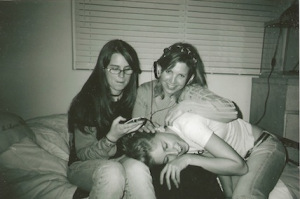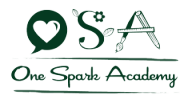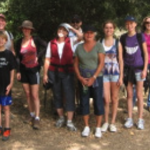
Real relationships are the result of authentic connections. Without people we can truly connect to, the stuff around us means little– it’s just empty packaging. And if we pay close attention, it’s easy to recognize when we’re not our true selves around others, right? That’s because it’s vital to our well-being to nurture and be nurtured by the relationships we have with those we work with, our families, the friends we choose, even ourselves. If we are healthy, safe, happy and authentic around others, we find inspiration and light. We accomplish much.
As a teacher, I’m connected to the families whose lives become inextricably bound with mine through the process of (in essence) co-parenting their child. And that student I have been entrusted with may forge a relationship with me that is delicate, critical, challenging, and rewarding…it is a remarkable thing. I don’t take lightly the responsibility that has been handed to me, to nurture souls and open minds, and fan a flame of curiosity, creativity, and innovation. Every effective teacher I know understands this, knows it is our job to model for students what healthy relationships are and demonstrate the values that can so easily be lost amongst peers, with the media personalities they admire, and sometimes even by the trusted adults in their lives. Some weeks, teachers are with students more than their parents, so it is critical that, in us, a child sees someone they can trust, someone who shows them authenticity, truth, honor, and integrity.
One of my greatest joys has been connecting to my students. The shot above was taken in 2003, a few years after these two precious sisters left my class. They were both enduring the loss of their father, but we found a moment in time to connect over a new iPod and, in grief, a sense of trust and light. This is just one example of how a teacher’s connection with his or her student must be authentic. Without an authentic connection, there is no real relationship, no trust. Without trust, there will be suffering, disconnection, and fear. Productivity will lapse, and the completion of assignments or projects will be driven by coercion, not by desire, motivation, or even the trust that simply trying something challenging may lead to greater joy.
When I mention the word joy in the same context as school, especially middle school, it may seem surreal. After all, most students in grades 6th-8th are a bit off their rocker and rightly so; this state of mind combined with the need to define one’s identity creates chaos in the relationships that matter. Ideally, a school should provide an environment in which healthy relationships are nurtured. Sadly, for too many kids, it’s not that way. But there’s no reason for it not to be. Life is hard enough, with unexpected challenges often created in the adult world. For this reason alone, the classroom should be a safe place, a kind place, even when challenges arise (and they will).
Last year, at my old school, I had a beautifully painted classroom door. At my request, the door was covered with peace signs, the symbol of what I wanted to feel inside that room. After the first few days of school, however, it wasn’t up to that door to create a sense of peace. Only my connection to my students and amongst them did. When my students had a bad day, I didn’t walk them to the door and say, “Here. This is how you should feel.” No, I connected to them. Sometimes those connections took longer than others. Real relationships rarely are instantaneous.
I know these connections are hard for many teachers to make, but this is rarely due to lack of desire. Education in most schools and classrooms is simply too layered with time-consuming tasks, combined with crowded classrooms, too little planning time, too many distractions, and too often a reliance on “stuff” that some think makes up for a lack of connection. I know how much time I used to spend working– sometimes 16 hours a day and most weekends– while in public education, just so I would have the time to connect with my students. But, that kind of schedule is not feasible for most, and it’s not sustainable for anyone.
Fortunately, I am now surrounded by colleagues, families, students, and friends whom I trust, value, and admire, and my own creativity has flourished. They have taken a leap of faith with me because they know how much relationships and trust matter, and how, in the presence of an authentic connection, we will all thrive.

